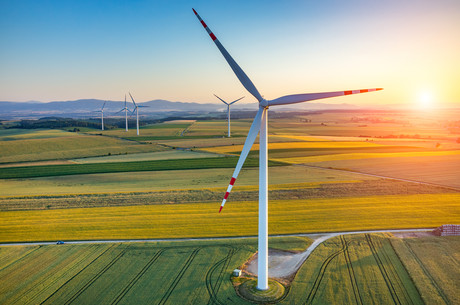SA's big battery a "game changer" for the energy sector

After its first year of operation, the Hornsdale Power Reserve (HPR) has “delivered on high expectations of its performance and market impact”, according to a report.
Global engineering and infrastructure advisory company Aurecon suggested there are a number of opportunities for battery energy storage in ensuring network reliability and stability in the transition to renewables. The company released an independent report analysing HPR’s performance and highlighted that the use of similar fast response systems could significantly improve the reliability, affordability and sustainability of energy across the country.
Located in South Australia, owned by Neoen and supplied by Tesla, HPR is the world’s largest lithium-ion battery energy storage system with a discharge capacity of 100 MW and energy storage capacity of 129 MWh. It shares the same 275 kV network connection point as the 300 MW Hornsdale wind farm. Dubbed a “game changer for the energy sector” by Aurecon’s Energy Leader Paul Gleeson, it was built to stabilise the state’s electricity grid, facilitate integration of renewable energy and help prevent load-shedding and blackout events.

Gleeson continued, it “has demonstrated some of the new capabilities we need in the electricity network in order to successfully integrate greater proportions of renewables as our generation fleet continues to decarbonise over time”.
Most significantly, the report found the system contributed to a reduction of close to $40 million in the frequency control ancillary services (FCAS) market, via increased competition and removal of the 35 MW local FCAS constraint.
HPR reserves 70% of its capacity for the SA Government to use in emergency situations and the other 30% is available to Neon. It achieves system security, reliability and a stable supply through its ability to provide short bursts of input and output. It can rapidly discharge and charge to support the safe and stable operation of the grid when it’s under threat, or when something unexpected happens elsewhere in the state.
The battery’s fast frequency response (FFR) capability was proven at the end of August 2018, when a lightning strike took the Qld-NSW interconnector out of service, putting the rest of the national electricity market (NEM) into a low-frequency condition. Within about 20 seconds, HPR provided significant frequency support to all connected NEM regions and helped restore SA to normal frequency range. The report said HPR plays a key role in reducing the risk of a blackout event, separation of SA from the NEM and prevention of load shedding.
According to Aurecon, the uptake of renewable energy is providing opportunities for batteries: battery providers will be able to supply volume firming agreements to complement power purchase agreements; providing non-network solutions, particularly with the adoption of solar and electric vehicles; and increasing share in ancillary services markets.
However, the report concluded there needs to be regulatory changes that enable batteries to be recognised for the services they provide, strengthen the commercial case for new projects and enable their deployment to support the energy transition.
Gleeson said these key regulatory changes include: creating an energy storage registration category to enable registration as a single facility; amendments to FCAS registration rules to enable full registration of capacity provided; and a frequency control framework to value FFR capability.
He said battery projects are “just one piece of the energy storage jigsaw”, and investment in other energy projects is needed to diversify the supply and security mix.
“HPR is a first step in terms of an immediate response to creating stability in a network which has a rapidly growing proportion of variable renewable energy. As the penetration of renewable energy increases in Australia, it’s critical for us to find cost-effective ways to make renewable power dispatchable and integrated into the grid. What has been done here by the SA Government, Neoen and Tesla is the type of innovative and forward-thinking approach that we are going to need more of in the years ahead,” Gleeson explained.
2025 saw record EV sales in Australia
More than 157,000 electric vehicles were sold in the nation last year, accounting for 13% of all...
2025–26 GenCost report released for public consultation
Solar PV and onshore wind still form the basis for Australia's cheapest electricity...
ARENA invests $21m in three EV charging projects
Funded under the Driving the Nation Program, the projects will focus on developing pathways and...



